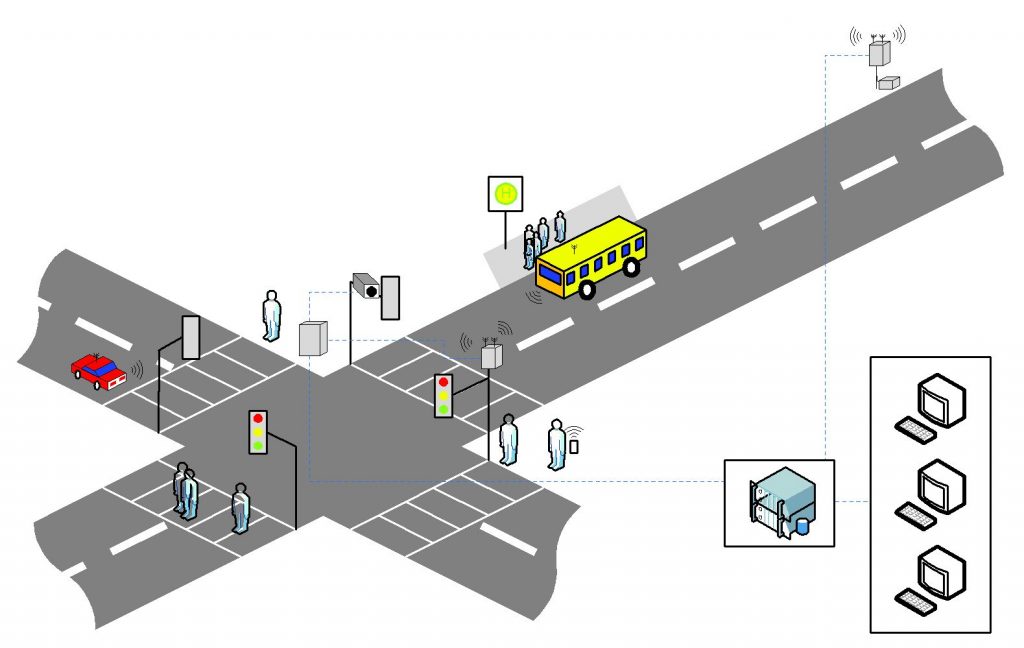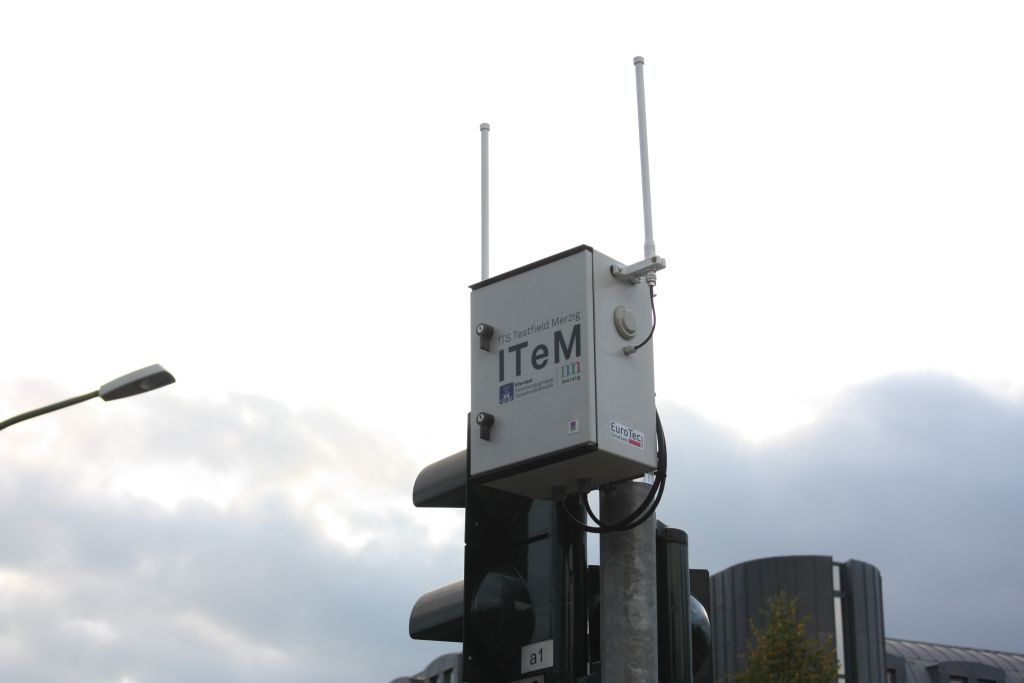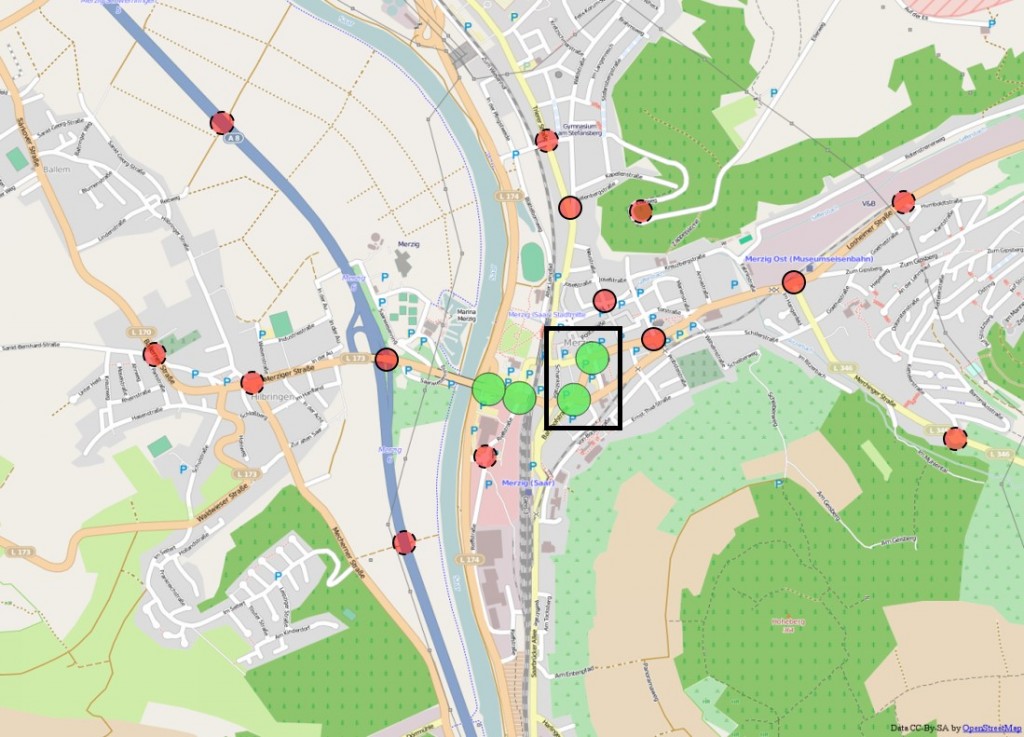ITeM – ITS Testfield Merzig
Intelligent transportation systems
FGVT starts innovative research project in the city of Merzig
Crossings near the city hall and the district office are being equipped with special communication systems since September 2014
The demand for higher safety, environment-friendliness and efficiency in road traffic has lead to a series of research projects in the field of Intelligent Transportation Systems (ITS) in the recent past. The concept includes communication of vehicles between each other and with the road infrastructure. The so-called Vehicle-to-infrastructure communication (V2I) can be realized using hybrid access networks. As a data source the vehicle provides information on current dangerous situations, traffic situation, recommended detours, parking spaces or the weather to other connected road users. Further they provide statistical data to adapt and improve important junctions in the traffic network. As a data sink the vehicle can be warned of current relevant dangers or be supported by additional information for an increased efficiency (i.e. individual detour information) and value-added services (weather or parking information).
General Goals
The planned project follows the approach of providing ITS-Service-Tests for small and medium-sized enterprises aside of the major projects. The industry shall be enabled to flexibly and independently create know-how which against the background of the coming ITS market introduction will lead to a competitive advantage for partners cooperating with the test field and also to a technology and structural advantage for the region. The htw saar is being enabled to further extend its applied research in the ITS field and incorporate the findings into various standardization bodies and project consortia, as well as being able to create new research initiatives. The aspects sustainable mobility, secure identity and communication form the core aspects of ITS research and development. The local industry as well as the city of Merzig benefit from the creation of such a technology center. Research and development on this future important topic in a regional environment and a, in contrast to other test fields, unique configuration and accessibility imply numerous possibilities for cooperation, a pioneering task in the field of ITS system validation, the base for an increase in local traffic efficiency and an empowerment of the region overall.
Already realized
- Equipment of 2 traffic junctions with ITS infrastructure components to acquire and collect data sent by test vehicles
- Equipment of the junctions with traffic cameras to optically validate testing data
- Construction of mobile units for vehicles
- Aggregation of the hardware for the junction to a ‘mobile roadside station” (mobile ITS Roadside Station, IRS)
- Equipment of vehicle of the public transportation for the use as permanent data suppliers in addition to the test vehicles
- Installation of an IT central including workstations connected via mobile connection to the test field
- Provision of application- and analysis-systems to process test field data
- Installation of a storage area network (SAN) to store the generated data
- Operation of parallel interfaces for aggregating available data from existing traffic infrastructure with test field data
- Inclusion of industry partners to develop day one/two use cases (i.e. traffic light assistant)
“For this project we selected the district town of Merzig because of its characteristic of a small town with modern traffic infrastructure”, explained project director Wieker. “The significant traffic volume caused by the freeway access as well as the function as important traffic junction make the city an interesting location”, explain Florian Petry, M.Sc. and Matthias Scholtes, M.Sc. both members of the research group. In the course of the project the four crossings on the town hall, the district office, the Kaufland-Roundabout and the driveways to and from the B51 between ‘Hilbringer-Brücke’ and Kauflandkreisel will be equipped with special devices. They serve the purpose of acquisition and collection of data delivered by test vehicles. A cooperation with public transport services is planned to involve buses as permanent data sources. For the validation of collected test data special traffic cameras are planned. The test field will exchange data with the central via mobile connection.
“The optimization of inner-city traffic flow is a top-ranked topic in the district town Merzig”, emphasized mayor Marcus Hoffeld. Against this background the project “Intelligent transportation systems test field Merzig” supports the city by providing important information through the aquired data and statistics, which can be used by the city to improve the traffic situation. In addition, says Hoffeld, this innovative research project of the htw saar is a profit for the image of the district town Merzig, because the name of the city is carried into the republic by the significant influence of the project. “We want to support the students in their work”, announced Hoffeld and pointed to the fact, that this federal project is considerably supported with public funding.
The construction work in Merzig has been in progress since September 2014. Initially, the two crossroads Bahnhof-/Hochwaldstraße in the area of the town hall and Lothringer-/Bahnhofstraße at the district administration office will be equipped. The upgrading of the remaining crossings is planned for 2015. The two initial crossings will each be equipped with three cameras to record the current traffic situation anonymously and to identify specially equipped research and test vehicles for the purpose of test validation. The research group pointed out that the issues of anonymity and protection of the privacy of third parties are a central element of the project, especially at this point, and are taken into consideration in every aspect. As a result, only information from test vehicles was collected.
Current status of the project
The headquarters was designed and, after the hardware was set up and integrated, was put into operation at the research group’s location in Saarbrücken. Two crossings have so far been equipped with infrastructure components (see figure). These are the crossings Hochwaldstraße/Zum Bauhof/Friedrichstraße and Lothringer Straße/Bahnhofstraße. The intersection construction includes 3 traffic cameras each. A communication unit to the vehicle to infrastructure communication via ETSI ITS G5 was mounted on existing masts. An application unit and the components for mobile communication were installed in the control unit cabinet of the respective traffic light system. Power and data connections exist between the application unit and the power supply in the control unit cabinet and the cameras or the communication unit.
- green (bordered): stationary roadside stations already installed at crossings
- green (not bordered): planned
- red: exemplary locations for mobile roadside stations (including units from CONVERGE)
The schematic structure of all connections is shown in the figure above. The construction of the crossing Lothringer Straße/Rieffstraße is blocked by the upcoming dismantling of the roundabout and the tendering process for the traffic lights. The construction of the crossing Lothringer Straße/Zubringer L174 is blocked by the tendering process of the traffic lights. The necessary hardware has already been procured and is ready for integration as soon as these crossings are rebuilt.
Data protection
With regard to data protection issues, the university is in contact with the independent data protection centre of the Saarland.
Outlook
Parallel to the further development and expansion of the test field, the next steps will complete the implementation of the CONVERGE reference architecture and verify the use cases specified there. For the integration of permanent data transmitters, in addition to the test vehicles of the research group, discussions are currently underway with the city and the transport associations to enable the equipment of city vehicles and/or buses. Further ITS applications such as traffic light phase assistant, travel time recording, parking management and event management are currently being developed and investigated in the test field within the framework of ongoing projects and several bachelor and master theses.
The test field already provides the basis for the work of the FGVT in its current projects, for example No LimITS, on the topic of electric mobility. At present, project applications in the field of automated driving are also underway, and the research group is using the test field to qualify for their implementation. In addition to equipping the remaining crossroads, a connection to the highway through further roadside stations is planned in the medium term.
In addition to the district town of Merzig, the project is also supported and promoted by the Saarland Ministry of Economy, Labour, Energy and Transport, the State Enterprise for Road Construction, Swarco Traffic Systems GmbH, Heusch Boesefeldt GmbH, the research initiative FHInvest of the Federal Ministry of Education and Research and the Saarland State Chancellery.
In August 2016, Prime Minister Annegret Kramp-Karrenbauer visited the test field. You can find more information here.
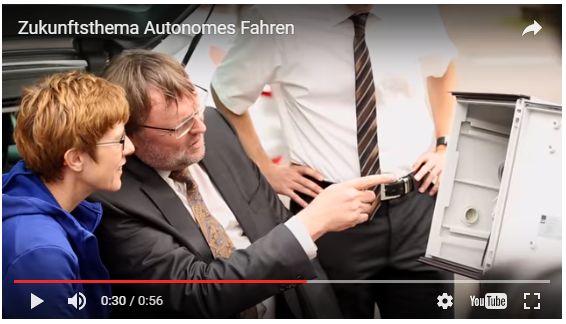
Further information can be found on the homepage of the city of Merzig.
Project partners and cooperation:
- Heusch Boesefeldt GmbH
Heusch Boesefeldt was already active as a partner in the simTD project as a provider in the area of control systems and traffic management. The task of providing an IRS centre for the collection, processing and analysis of traffic data was also performed in the current project. For this purpose, an analysis server will be integrated into the control centre which, among other things, processes the data provided by Swarco. Due to the activities in research with well-known car manufacturers and suppliers, the potential for further cooperation is given. - State enterprise for road construction
Responsible for the administration of the traffic lights in Merzig, the State enterprise for road construction (LfS) allows and supports the project. - Ministry of Economy, Labour, Energy and Transport
As the highest authority for transport in Saarland, the Ministry supports the project, provides resources through the LfS and established the initial contact with the Merzig city administration. In addition to setting up the test field itself, the Ministry also supports the participation of the test field in various other projects and initiatives. - Merzig City Council
The city administration considers the project to be in line with the further development of the city and the traffic situation. It is interested in making full use of the possibilities of ITS, especially in the field of electric mobility. - Swarco Traffic Systems GmbH
As the operator of the light signal systems in Merzig commissioned by the LfS, Swarco provides read access to the corresponding traffic computer. Swarco also provided support for the installation of the hardware on site.
As Global Player in traffic research and the participation in numerous research projects, the potential for further activities in the field of research was also given here. - Independent Data Protection Centre Saarland
The independent Saarland Data Protection Centre has conducted a review of the current camera concept and certified it as harmless. - Vodafone
Thanks to the research group’s good contacts with Vodafone, Vodafone allows its test network to be used to connect the test field to the headquarters and provides the corresponding SIM cards.
sponsored by:
 | 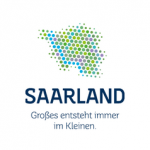 |
 | 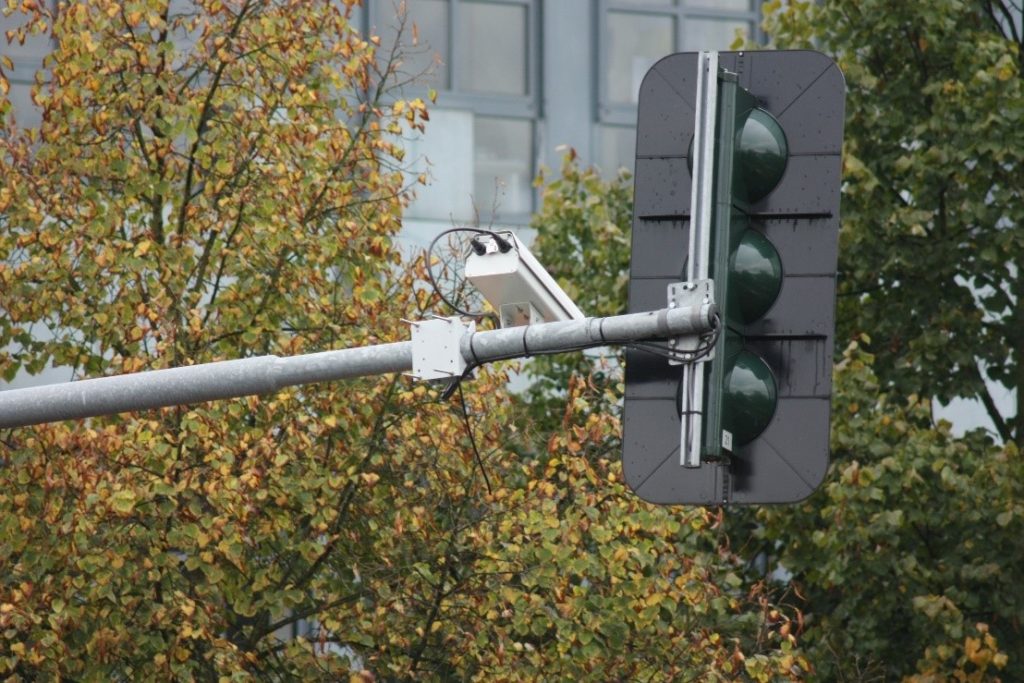 |  |
On 02 September 2017, an open test field day will take place in Merzig. Further information can be found here: https://fgvt.htwsaar.de/public/index.php/smart-mobility-erfahren/

